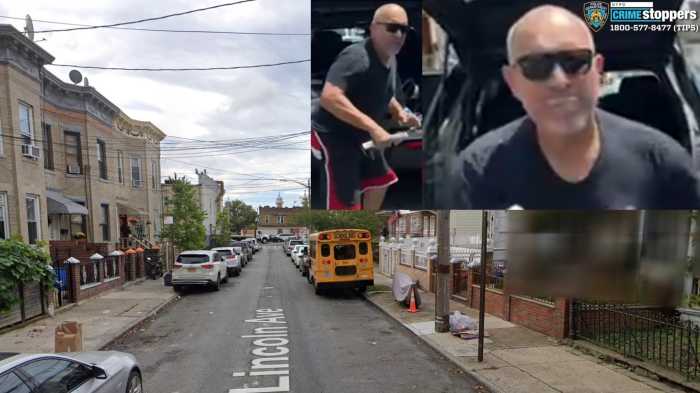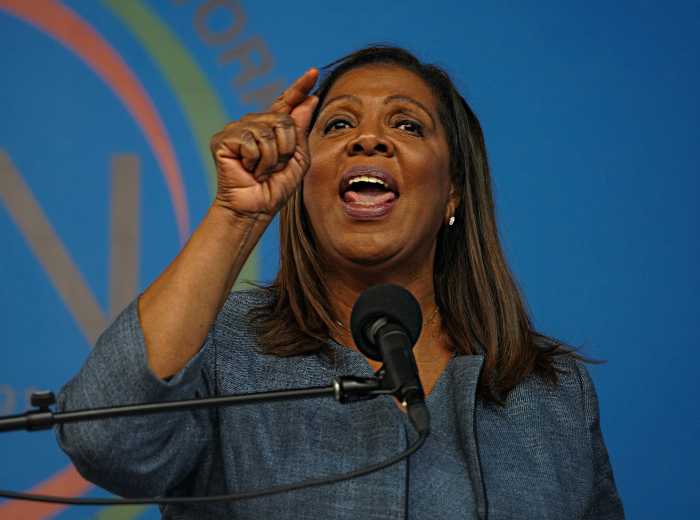New York City will be installing 1,500 new barriers in busy areas as part of an anti-terror plan geared toward protecting pedestrians.
Following three terror attacks since fall 2016 — including one where an ISIS-inspired driver killed eight on a popular Manhattan bikeway — Mayor Bill de Blasio on Tuesday announced that his administration will spend $50 million on 1,500 permanent perimeter barriers to keep those visiting high-profile destinations of the city safe. The majority of those barriers will be traditional metal bollards, according to mayoral spokesman Austin Finan.
“These are the most cowardly kinds of attacks — when someone with a vehicle plows into a group of innocent pedestrians. It’s disgusting, but we know there are some out there who mean to do us evil and we will protect against it,” de Blasio said. “It’s also important to recognize that sometimes we’ve seen tragedies that were not [attacks].
“We’ve seen cars that just spun out of control, or reckless drivers, or someone who — god forbid — had a heart attack while driving,” he continued. “We want to make sure in some of the most heavily traveled areas of the city, these bollards protect against those kind of tragedies as well.”
The mayor did not detail which specific locations will be receiving the bollards, which are expected to be installed over the next several years, beginning in March. The city studied business corridors, tourist attractions and iconic sites to prioritize its key locations and will announce specific sites closer to when installation begins in March, according to Austin Finan.
On Halloween, Sayfullo Saipov, a 29-year-old Uzbek native, allegedly drove a rental truck through a portion of the Hudson River Park greenway in Manhattan, killing eight and injuring at least 12. In the wake of the attack, the de Blasio administration peppered popular pedestrian spaces in the city with temporary, concrete blocks — usually painted white with blue “NYPD” lettering — to prevent vehicular access.
Those blocks will be replaced with “more attractive” temporary blocks this month before the permanent structures are installed, according to a news release announcing the plan.
“It will also help us keep order as it relates to all the competing vehicular, bicycle and pedestrian traffic that defines our great city,” NYPD Commissioner James O’Neill said. “We need to keep as many of our spaces as welcoming as possible while also making sure they’re safe as possible, too.”
The city has faced increasing pressure from lawmakers to install permanent bollards around the city to protect pedestrians from terror attacks. The City Council passed legislation from Councilman Ydanis Rodriguez at the end of last year requiring the administration to report on the number of bollards installed annually.
The costs of the bollards, at more than $30,000 each on average, seem to far exceed those of similar installations in other cities. In Las Vegas, Muller Construction is reportedly installing 500 bollards around the Strip for about $2.5 million — or $5,000 per bollard. To protect Bourbon Street in the French Quarter of New Orleans, the city is installing movable bollards at the cost of $15,000 apiece, according to a NOLA.com report.
Finan said each bollard’s price will vary based on design and location. He said the cost was high because certain bollards with foundations running deeper into the ground will require the movement of underground utilities.
Critics believe an overabundance of vehicular barriers could hamper the walkability of pedestrian-friendly areas of the city. The temporary blocks put in place recently “transform wide openings into small pinch points,” according to columnist Nicole Gelinas, who said the current configurations around tourist destinations give the impression that “the terrorists have won.”
Jeff Speck, author of “Walkable City: How Downtown Can Save America, One Step at a Time,” tweeted that, “Whether this is a good or a destructive plan will essentially depend on whether the bollards are lovely or not.”
Transportation Commissioner Polly Trottenberg said key for the city will be installing the bollards without impeding pedestrians.
“From DOT’s point of view,” Trottenberg said, “we obviously want to make sure that these spaces are inviting; that pedestrians can flow; that people feel safe but can also enjoy the public spaces.”
Caroline Samponaro, the deputy director of Transportation Alternatives, applauded the barrier plan, but said it was somewhat half-baked. In addition to installing the barriers, the city must also consider banning private cars from the areas with dense pedestrian traffic and support congestion pricing, she said, following cities abroad like London, Oslo and Brussels.
“We have to be putting together a proactive plan for the kind of city we want generations from now, where people are moving in more sustainable ways but also, on a basic level, safe ways,” Samponaro said. “That has to involve limiting private automobile trips.”



































